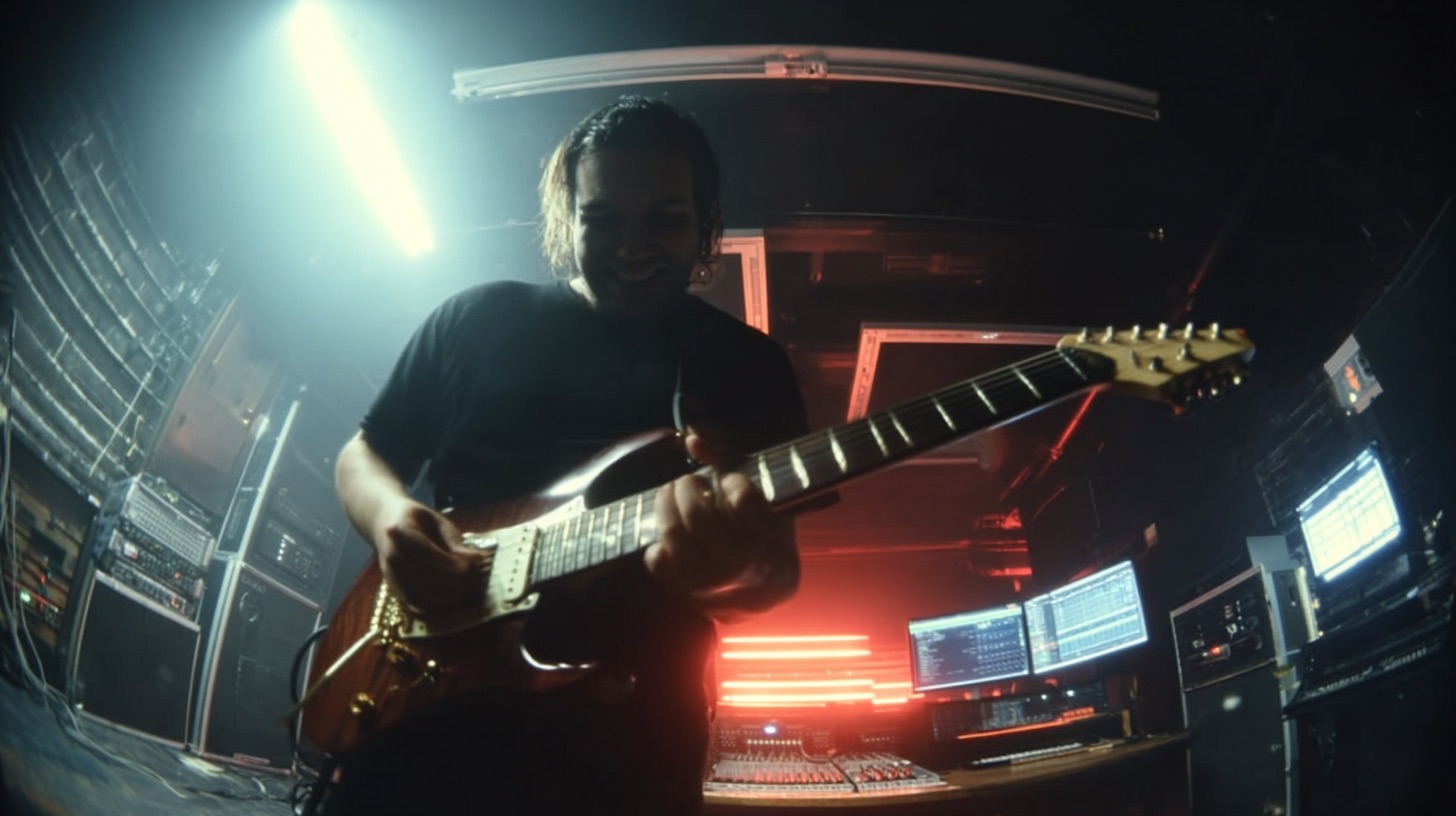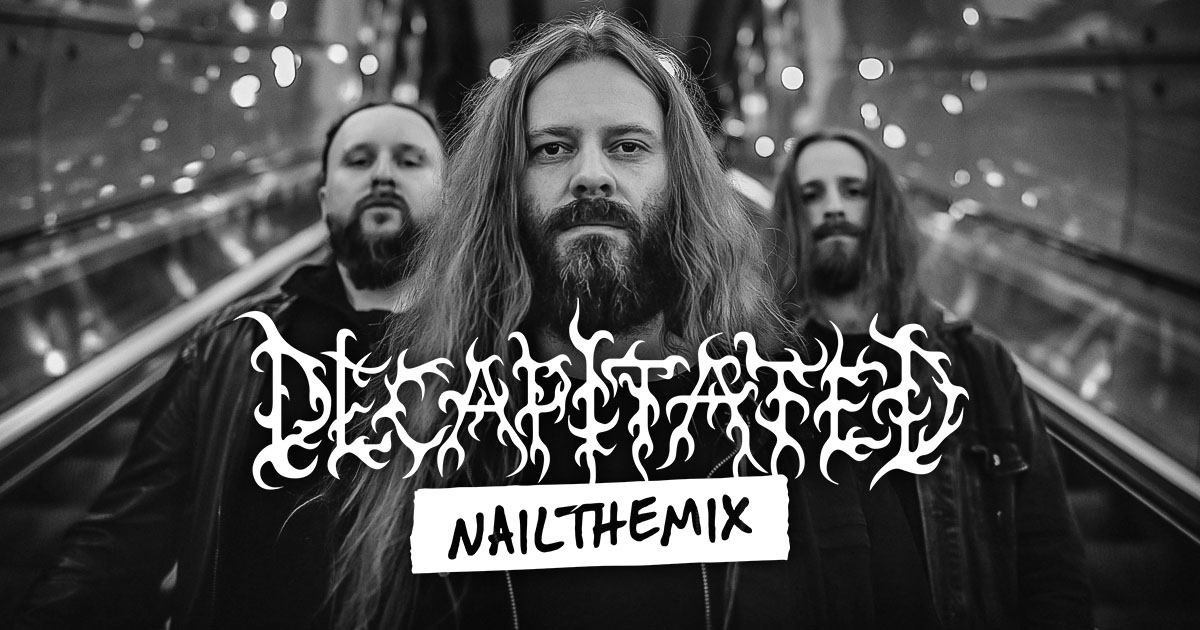
Crafting Memphis May Fire’s Hybrid Metalcore Bass Tone
Nail The Mix Staff
Let’s be real: getting a metalcore bass tone that’s both huge and articulate is a constant battle. You need it to lock in with the kick drum like a machine, provide a massive low-end foundation, and still have enough grit to cut through a wall of distorted guitars. It’s a tall order.
In his Nail The Mix session, Kellen McGregor from Memphis May Fire breaks down the exact hybrid approach he used to solve this puzzle. Forget the endless debate of “real bass vs. programmed bass”—Kellen’s method uses both to create one monstrous, perfectly controlled tone. Let’s dive into how he layers multiple sources to get the best of both worlds.
The Foundation: Real Performance Meets Robotic Precision
Before even touching a plugin, the core philosophy is about locking the bass in. In a genre as rhythmically intense as metalcore, a tight bass is non-negotiable. Kellen’s take is that if you already have live overheads and human-feeling vocals, making the bass perfectly on-grid won’t sound fake; it will just sound powerful.
This starts at the source. Since their bassist Cory Elder plays with a ton of force—a great thing for aggression, but a nightmare for tuning—they have a simple-but-effective trick: they tune his bass slightly flat before tracking. The hard playing naturally pushes the notes sharp, so this helps everything sit closer to pitch.
Even so, for riff-heavy music, post-processing is key. Kellen almost always uses Melodyne to meticulously tune and time-align the live bass performance. Getting every 16th note perfectly consistent is the goal here, creating a rock-solid foundation that locks in with the kick drum.
The real magic behind this massive tone is a four-part harmony of different bass tracks, each designed for a specific job. Kellen routes all four of these layers to a single “Bass Stack” bus for final processing.
Building the Perfect Bass: A 4-Layer Stack
Layer 1: The Real Bass — Capturing Grit and Scrape
The original live bass performance, recorded through an Avalon DI, isn’t used for its low-end. Instead, it’s all about the top-end texture, the authentic pick attack, and the percussive scrape you can only get from a real player.
The signal is heavily processed to isolate just this character:
- Distortion: FabFilter Saturn is used to add drive, focusing on the “British Rock Amp” model to saturate the mid-to-high frequencies.
- EQ: A stock EQ aggressively high-passes the signal, cutting out all the low-end mud. It also carves out “funky frequencies” and pulls down the harshness of the pick scrape (around 3.5kHz).
- Limiting: A limiter is slammed pretty hard to make the scratchy texture ultra-consistent.
Creating an Extra Dirt Track
To get even more controlled dirt, Kellen duplicates the DI and runs it through another in-the-box distortion chain. He cranks Saturn for heavy saturation on everything from 160Hz up, then uses a filter to isolate only the frequencies between 1kHz and 7.5kHz. This gives him a custom-shaped distortion layer with more control than a typical pedal.
Layer 2: The Mid-Range — The Body and the Note
With the real-world grit covered, a virtual instrument provides the consistent body and fundamental note of the bass. For this, Kellen uses the MIDI from the bass performance to trigger Impact Soundworks’ Nuclear Bass.
The processing here is all about shaping that core tone:
- Amp Sim: The DI from Nuclear Bass is run through a Darkglass plugin for its signature drive, though the blend is dialed back from 100% since other layers are already providing distortion.
- EQ: This is where crucial space is carved in the mix. Using smart EQ strategies for mixing modern metal, he cuts 75Hz to make room for the kick, while also dipping around 200Hz and 360Hz to clean up mud.
- Compression: Waves MV2 is used to both compress downwards and bring up the low-level details, creating a very smooth and even sound. Kellen offers a word of caution here: be careful, as this upward compression can bring up unwanted string ring or “low-mid floppiness” if you’re not careful. This is a classic example of applying metal compression secrets to achieve consistency.
Layer 3: The Sub — Consistent Low-End Power
To get that chest-thumping low end, a dedicated sub layer is essential. A live bass can have inconsistent sub frequencies from note to note, so a synth bass ensures it’s always solid.
Kellen uses the “Slap in a Sub” patch from Spectrasonics Omnisphere. It’s a clean and simple sine wave-like tone. The processing is minimal: filter out any unnecessary high-end information and then use Waves R-Bass to slightly enhance the sub content right around 62Hz. Done.
Gluing It All Together: The Bass Bus
With all four layers created, they are sent to a single bus for final group processing. This “glues” them together into one cohesive instrument.
- Dynamic EQ: FabFilter Pro-MB is used to tame any notes in the upper-mids that poke out too much, ensuring the bass sits evenly throughout the riff.
- Surgical EQ: FabFilter Pro-Q 3 handles the final tone shaping. Kellen gets rid of a ton of “mid-range ring” that can make the bass sound honky or cluttered. He carefully balances the low-mid note definition (around 100-120Hz) with the deep sub (40-60Hz) to keep the tone both audible on small speakers and powerful on large systems. A final, steep high-pass filter is set around 30Hz to eliminate useless sub-rumble and tighten everything up.
- Final Limiting & Mono: A Waves L1 Limiter just kisses the very top of the peaks to catch any stray transients, and a utility plugin ensures the final signal is 100% mono.
The Final Trick: Sidechaining for Ultimate Kick Clarity
Here’s the secret sauce for making the kick and bass work together perfectly. Kellen uses a simple but powerful sidechaining trick with Wavesfactory Trackspacer.
Here’s the setup:
- First, he prints the final kick drum sample to its own audio track.
- He sets the output of this new track to “None” so you don’t hear it, but the DAW can still see the audio.
- On the main Bass Stack bus, he inserts Trackspacer and sets its sidechain input to be the muted kick track.
He sets the plugin to duck the bass by only 17% with the fastest possible attack and release. Every time the kick hits, Trackspacer carves a small, precise hole out of the bass signal, making room for the kick’s transient to cut through cleanly. The result is maximum impact and clarity without either element fighting for space.
Learn from the Pros
This layered, hybrid approach is a game-changer for achieving modern metalcore bass tones that are both powerful and defined. These techniques—from multi-layering to surgical bus processing and kick-triggered sidechaining—are things you can apply to your own mixes right now.
Memphis May Fire on Nail The Mix
Kellen McGregor mixes "Shapeshifter"
Get the Session
But imagine seeing Kellen McGregor actually build this tone from scratch, explaining every plugin choice and automation move. On Nail The Mix, you can. When you join, you get access to the full multitracks from this Memphis May Fire song and watch Kellen mix it, walking you through every single step. It’s your chance to see exactly how pro mixes come together and finally unlock your sound.
Get access to professional multitracks from sessions like this one!
Get a new set of multi-tracks every month from a world-class artist, a livestream with the producer who mixed it, 100+ tutorials, our exclusive plugins and more
Get Started for $1





